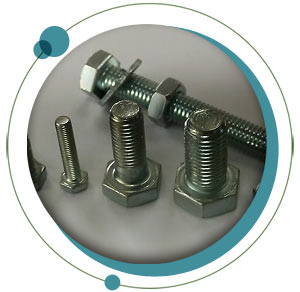What should you know about stainless steel fasteners before usages?
There are many types of steel-making materials. Among them, stainless steel fasteners have more texture and appearance, better strength performance, corrosion resistance advantages, easy fabrication, and suitable welding. Stainless steel fasteners can be plated or heat-treated for better performance while being 100% recyclable. The ASTM A193 B6 Bolts use stainless steel as the material. Although stainless steel is the fastener, the cost is higher, and the cycle life is relatively short. The firmware solution still belongs to a cheaper one.
- Use of nickel in fasteners
To alleviate cost pressure and improve the competitiveness of fasteners, fastener manufacturers have especially sought alternative materials and produced low-nickel stainless steel fasteners.

- Stainless steel magnetic problems of fasteners
If you are using stainless steel as the primary material for fasteners, you also need to understand the magnetic issues of stainless steel itself. Stainless steel is generally considered non-magnetic, but after a specific process of austenitic serial materials, it is possible to have certain magnetic properties. Still, magnetic is considered the criterion for accurately judging the quality of stainless steel fasteners.
Chromium manganese stainless steel fasteners in stainless steel fasteners cannot replace the use of ASTM A453 GR 660 series stainless steel, especially in highly corrosive work environments.
What are the main benefits of a functional fastener specification?
Most applicable for most applications in various industries is the benefit of product standardization. Why specify a custom-built 11mm bolt for one binding and a 9mm bolt for another when you could use a single 10mm solution for both that is freely available and achieves the same purpose? It may be faster to design these components than to track down a standard parts list during design, but these savings will be quickly wiped out when production begins.
Stainless steel fasteners manufacturers in india have worked with customers to reduce part counts by up to 40% during the design phase. Standardized fasteners minimize the bill of materials and simplify supply. Throughout the development process and production run, standardization offers huge cost savings.
Another benefit is the weight. Selecting aluminium components over steel may only save a few grams on a single part. Still, in many high-tech industries, such marginal gains could represent a clear advantage over the competition.
The ease of installation of the fasteners should also be considered, as it can significantly improve the efficiency of the production line. Assembly teams want to avoid dealing with a puzzle of containers and components that resembles a recurring nightmare. Correctly specifying fasteners can mean reducing bins and a more straightforward definition of what should go where. When production line personnel install thousands of these components daily on multiple units, a clear fastener policy leads to faster installation across the line and ultimately improves productivity.
Ultimately it is a matter of cost. Building prototypes, modifying the design, meeting industry standards, and achieving a finished product before launch schedules are incredibly capital-intensive. Duplex Fasteners manufacturer in India can afford to increase this by operating a fastener policy that needs to be optimized. In most cases taking an integrated and involved approach to the fasteners, you specify can minimize the financial impact.
Comments
Post a Comment